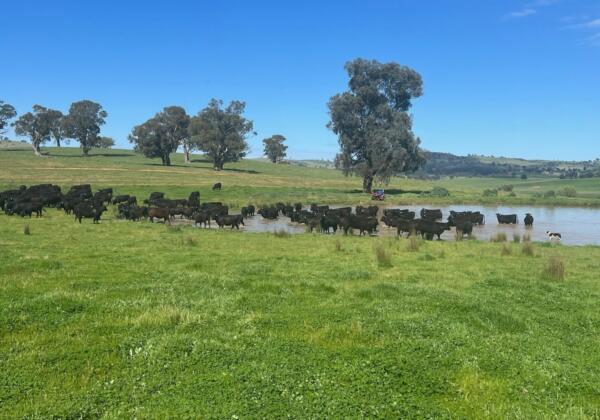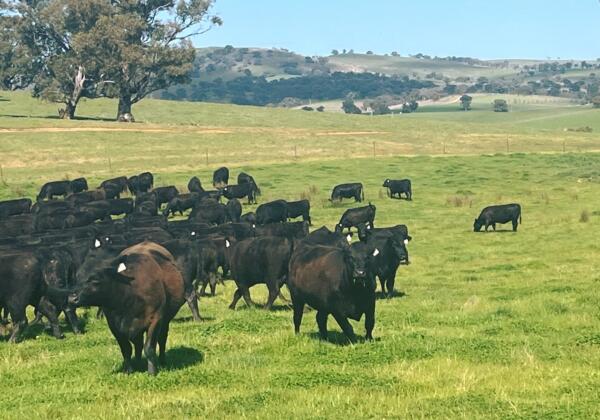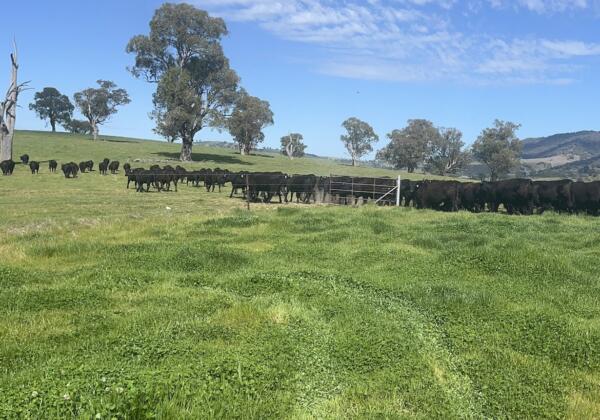Setting hurdles for marble score and fertility helps this cattle producer finesse her herd
Story and photo by OLIVIA CALVER, The Land 27th May 2021
There are multiple hoops that a heifer must jump through to stick around in Susie Chisholm’s 500-head Angus commercial cow herd including fertility and marbling.
But with more than 30 years of data on her herd, Mrs Chisholm, who has farmed at Gwalia, Adelong since 1984, is in a position to demand high standards.
Mrs Chisholm has had a long partnership with Te Mania Angus and as part of their progeny test group supplies the stud with feedback on their latest genetics.
“We started off recording the data in books and you would make a few mistakes on each page,” Mrs Chisholm laughed.
These days she can simply boot up the computer to compare how her herd is performing in every estimated breeding value and index with the breed average – information recorded with an electronic ID wand and automatically sent via Sapien Technology to Angus Breedplan and Te Mania.
The cattle’s birth weight, weaning weight and post weaning weights are all recorded, along with a docility score, then the steers and heifers are scanned between 12 and 15 months of age.
“The mature cow weights are also taken, plus feet and udder assessments,” Mrs Chisholm said.
It’s a lot of work for a commercial producer, but Mrs Chisholm, a self-confessed perfectionist, is seeing the benefits.
Her herd’s birth weight and days to calving is well below the breed average, while their intramuscular fat value is at +3, compared to the breed average of +2, and their heavy grain index is $148 (breed average +126).
“It has taken me a long time to get to this position,” Mrs Chisholm said.
One of the highest hurdles her cattle must jump over is fertility, with only cows and heifers tested in calf in the first and second cycle retained.
Mrs Chisholm sells her surplus heifers on AuctionsPlus and this year even her empty heifers made up to $2900, while some of her PTIC heifers and mature cows, sold for $3350, which was the top price for cows at the Team Te Mania feature female sale.
The entire steer drop is sold to Rangers Valley at around 16 months, Mrs Chisholm aiming to sell them at 465 kilograms, something that is usually achieved without relying on supplementary feed.
I think the faster and more efficiently we can produce the end result the less impact on the planet there will be.
“This year I don’t think we’ll have enough feed,” Mrs Chisholm said.
“Last year I found agistment for the steers, which was worth doing because the price of cattle went ‘boom’.
“During the drought I got 550 head through by feeding canola hay to the cows and silage to the weaners.”
Marbling is one of the key traits now sought after by Rangers Valley and the broader market so Mrs Chisholm has also culled cattle with IMF values below the breed average.
“Now the whole herd is marbling 3 and I would like to see it go up to 3.5,” she said.
Her next point of interest is genomic testing, which could provide more accurate information earlier.
“We also need to understand net feed efficiency,” she said.
“I think the faster and more efficiently we can produce the end result the less impact on the planet there will be – we should be on our toes for future criticism.”
Early-weaning every year, not only in drought
Mrs Chisholm aims to improve her cattle’s efficiency by early-weaning every year.
“I yard wean at three to four months in order to give the best pasture to the weaners,” she said.
“I also like to get weaning done before the summer hits, you don’t want them in the yards in 40 plus degree weather.”
Mrs Chisholm no longer used pellets for weaning and instead relied on good-quality silage, which she feeds out for close to a month, following a four day yard weaning.
Weaning also allows Mrs Chisholm to yard train the calves, crucial given the number of measurements and assessments she conducts.
“I’m amazed at how quickly you can educate young cattle,” Mrs Chisholm said.
“My theory is if you don’t push them something will poke out and lead.
“We put them all through the yards three times per day and at first they’re hesitant … but by the third time they move very quickly through the yards.
“That education sticks with them the rest of their lives, they learn to mob up and they learn to lead.”
- Team Te Mania member since 1995
- Breedplan recorded, Angus Commercial Register
- Johne’s status MAP MN2
- EU accredited
- CattleCare accredited
- Calving period – Aug-Sep
Episode 5 of RawAg Podcast with Susie Chisholm
Herd Genetics: Keeping the future bright for farmers, Jamie -Lee Oldfield, The Weekly Times June 1 2017
Chisholm Quad Bike Safety, Tumut & Adelong Times, July 8, 2016
Celebrating 2012 Australian Year of the Farmer: Cattle Crusader Susie Chisholm, Rural Women’s Network, December 2012

